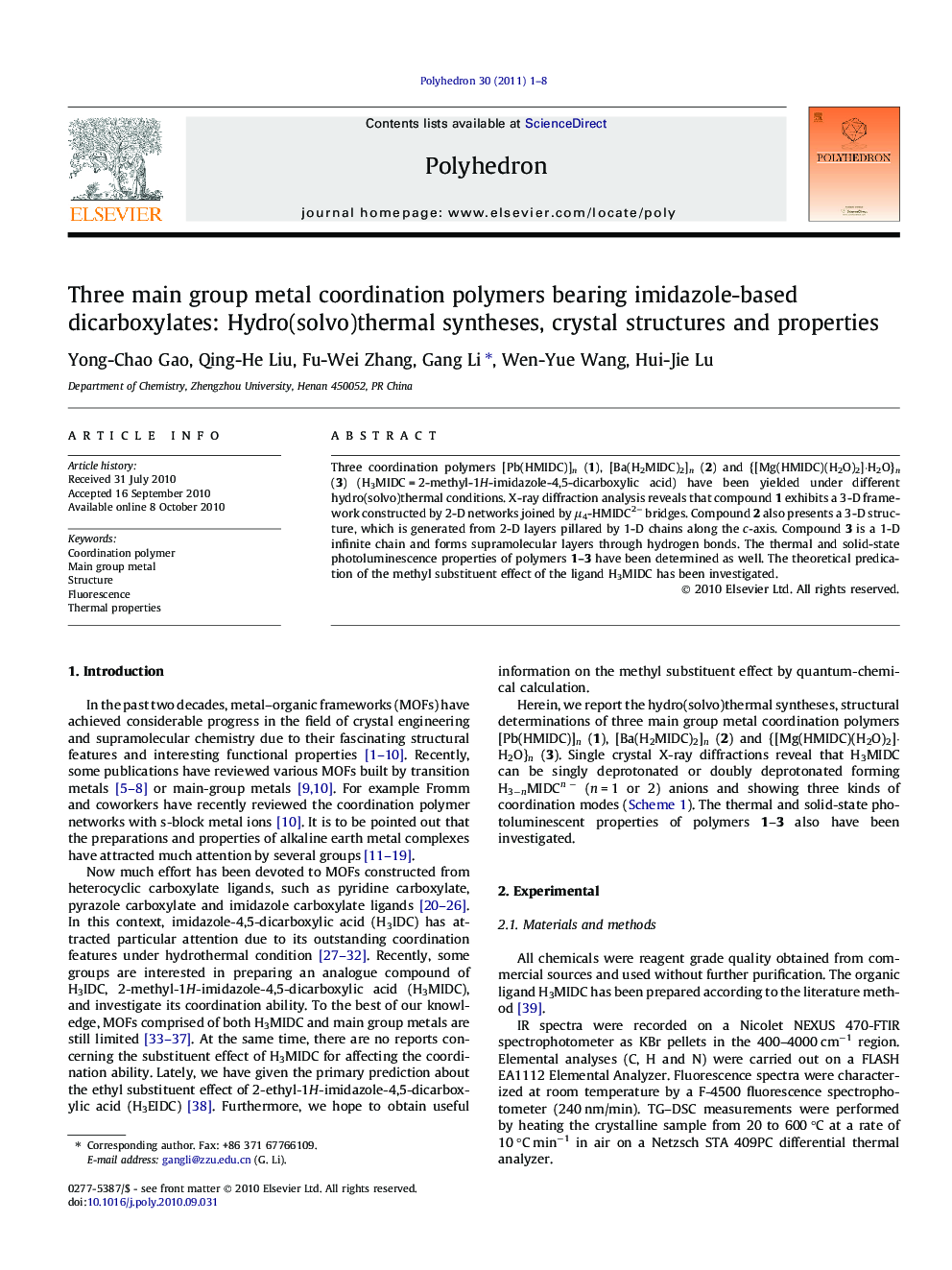| Article ID | Journal | Published Year | Pages | File Type |
|---|---|---|---|---|
| 1336456 | Polyhedron | 2011 | 8 Pages |
Three coordination polymers [Pb(HMIDC)]n (1), [Ba(H2MIDC)2]n (2) and {[Mg(HMIDC)(H2O)2]·H2O}n (3) (H3MIDC = 2-methyl-1H-imidazole-4,5-dicarboxylic acid) have been yielded under different hydro(solvo)thermal conditions. X-ray diffraction analysis reveals that compound 1 exhibits a 3-D framework constructed by 2-D networks joined by μ4-HMIDC2− bridges. Compound 2 also presents a 3-D structure, which is generated from 2-D layers pillared by 1-D chains along the c-axis. Compound 3 is a 1-D infinite chain and forms supramolecular layers through hydrogen bonds. The thermal and solid-state photoluminescence properties of polymers 1–3 have been determined as well. The theoretical predication of the methyl substituent effect of the ligand H3MIDC has been investigated.
Graphical abstractThree polymers [Pb(HMIDC)]n (1), [Ba(H2MIDC)2]n (2) and {[Mg(HMIDC)(H2O)2]·H2O}n (3) (H3MIDC = 2-methyl-1H-imidazole-4,5-dicarboxylic acid) have been hydro(solvo)thermally synthesized. Compounds 1 and 2 exhibit 3-D framework constructed by 2-D networks, which is further connected by HMIDC2− or H2MIDC− ligands. Compound 3 is a 1-D infinite chain. The thermal and solid-state photoluminescence properties of the three complexes have been determined as well.Figure optionsDownload full-size imageDownload as PowerPoint slide
